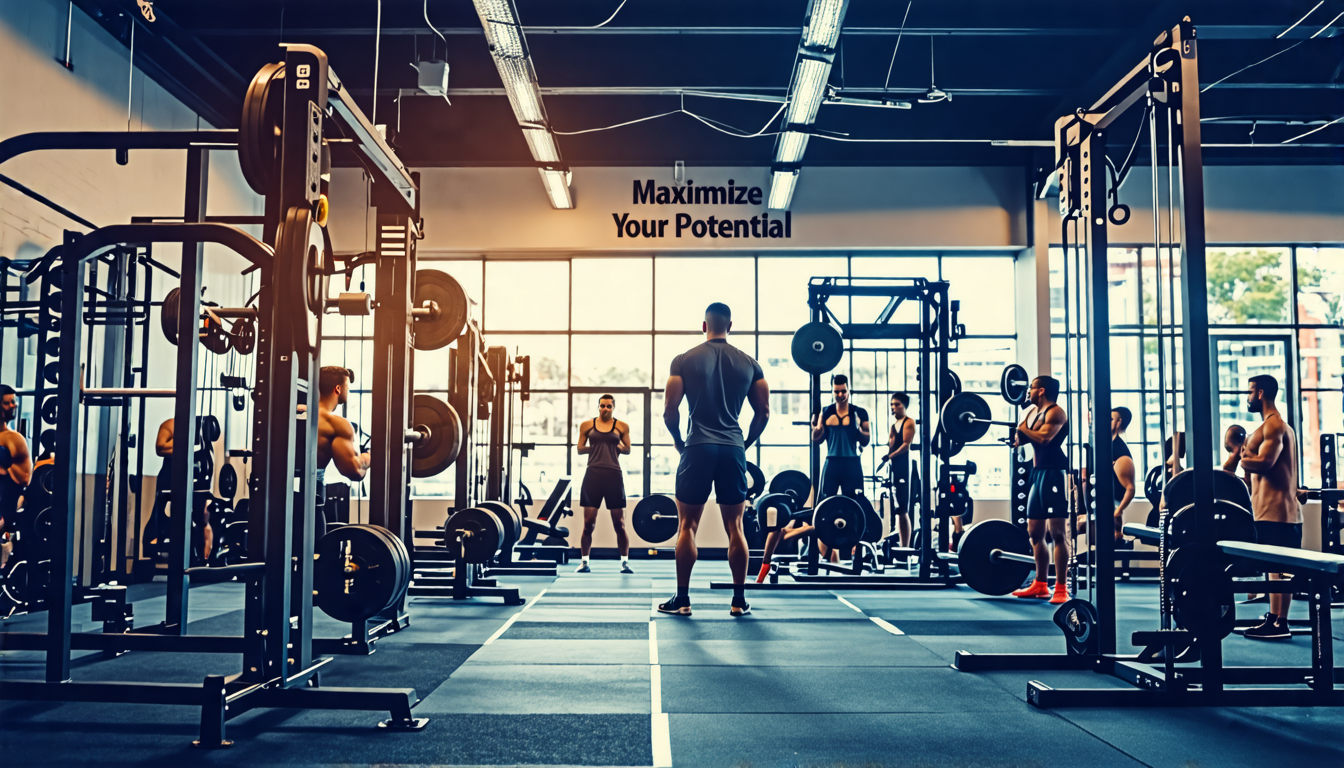In the quest to elevate athletic performance, every detail matters. Athletes at all levels are constantly seeking ways to gain an edge, whether through fine-tuning their nutrition, optimizing their training regimen, or enhancing recovery techniques. Understanding the crucial elements of nutrition, training, and recovery is essential for anyone looking to maximize their athletic potential. This comprehensive guide delves into proven strategies to boost performance, starting with the pivotal role of macronutrients like proteins, carbohydrates, and fats, and extending to the importance of proper hydration and electrolyte balance. Timing your nutrition, particularly pre and post-workout, can significantly influence your energy levels, endurance, and overall performance.
Moreover, adopting effective training techniques is paramount for achieving peak performance. Strength training not only builds muscle but also enhances endurance, speed, and agility. Incorporating cardio exercises can further refine your endurance, enabling you to perform at your best for longer periods. Equally important is your approach to recovery. Rest, adequate sleep, and active recovery methods are vital in preventing injuries and ensuring that you maintain optimal performance levels over time.
This article is designed to equip you with actionable insights and strategies to propel your athletic performance to new heights. Whether you’re a seasoned athlete or just starting your fitness journey, these expert-backed tips will help you unlock your full potential and achieve your goals.
Nutrition Strategies for Enhanced Athletic Performance
The Role of Macronutrients: Understanding Proteins, Carbs, and Fats
When it comes to enhancing athletic performance, macronutrients play a vital role. Athletes must understand the importance of balancing proteins, carbohydrates, and fats to fuel their bodies efficiently.
Proteins are essential for muscle repair and growth. Consuming adequate protein helps in the recovery process after intense workouts and ensures that muscles are built stronger. Sources of high-quality protein include lean meats, fish, poultry, eggs, dairy, legumes, and plant-based proteins. For athletes, the recommended protein intake can range from 1.2 to 2.0 grams per kilogram of body weight, depending on the level and intensity of training.
Carbohydrates are the primary source of energy for athletes. They are stored in the muscles and liver as glycogen, which is used during physical activities. For optimal performance, athletes need to ensure that their glycogen stores are adequately replenished. Complex carbohydrates such as whole grains, fruits, vegetables, and legumes provide sustained energy. The general recommendation for carbohydrate intake is 6-10 grams per kilogram of body weight per day, which may vary based on the sport and training intensity.
Fats are crucial for long-lasting energy and play a significant role in hormone production and nutrient absorption. Healthy fats, such as those found in avocados, nuts, seeds, and oily fish, should be a part of an athlete’s diet. While the exact fat intake will vary, it should constitute about 20-35% of the total daily caloric intake.
Importance of Hydration and Electrolyte Management
Hydration is a cornerstone of athletic performance. Dehydration can lead to decreased strength, endurance, and mental clarity, all of which can negatively impact performance. Athletes should aim to drink water consistently throughout the day, not just around workout times. A general guideline is to consume about half an ounce to an ounce of water per pound of body weight daily, adjusting for exercise intensity and environmental conditions.
Electrolytes such as sodium, potassium, magnesium, and calcium are vital for maintaining fluid balance, muscle function, and nerve transmission. During intense exercise, athletes lose electrolytes through sweat, and these need to be replenished to avoid cramps, fatigue, and other complications. Sports drinks can be beneficial for replacing electrolytes lost during prolonged exercise, but it is also important to consume foods rich in these minerals. Bananas, milk, yogurt, nuts, and leafy greens are excellent sources.
Pre and Post-Workout Nutrition: Timing and Benefits
Timing is critical when it comes to nutrition for athletes. Pre and post-workout meals play a distinct role in performance and recovery.
Pre-Workout Nutrition:
Eating before a workout provides the body with the energy needed for peak performance. Ideally, a pre-workout meal should be rich in carbohydrates and include some protein, consumed about 2-3 hours before exercise. This timing allows for proper digestion and energy availability. For sessions where a full meal isn’t possible, a small snack like a banana with peanut butter or a smoothie can be eaten 30-60 minutes before the workout.
Examples of effective pre-workout meals include:
- Bowl of oatmeal with berries and a protein shake
- Whole grain bread with almond butter and a piece of fruit
- Greek yogurt with honey and granola
- Quinoa salad with veggies and lean meat
Post-Workout Nutrition:
Post-workout nutrition focuses on recovery, muscle repair, and replenishing glycogen stores. Consuming a blend of carbohydrates and protein within 30 minutes to two hours after exercising is ideal. This period, known as the ‘anabolic window,’ allows muscles to absorb nutrients more effectively, promoting faster recovery and growth.
Some great post-workout meal options include:
- Grilled chicken with sweet potatoes and steamed vegetables
- Protein smoothie with spinach, banana, and protein powder
- Brown rice with black beans and avocado
- Salmon with quinoa and mixed greens
In conclusion, understanding and implementing proper nutrition strategies can significantly enhance athletic performance. Balancing macronutrients, staying hydrated, managing electrolytes, and timing meals effectively are crucial elements that can make a substantial difference in an athlete’s ability to train, perform, and recover.

Training Techniques to Maximize Athletic Potential
Strength Training and Its Impact on Performance
Strength training is a fundamental component of any athletic regimen aimed at boosting performance. It involves exercises designed to improve muscle strength, endurance, and overall power. These exercises typically include weight lifting, resistance band movements, and bodyweight exercises. By incorporating strength training into your fitness routine, you can enhance muscle mass, increase metabolic rate, and improve overall body composition.
One of the primary benefits of strength training for athletes is the prevention of injuries. Stronger muscles, tendons, and ligaments are less prone to strains and other injuries. Additionally, this type of training enhances joint stability and increases bone density, which are crucial for long-term athletic performance.
Effective strength training programs should include compound movements such as squats, deadlifts, bench presses, and pull-ups. These exercises engage multiple muscle groups simultaneously, promoting functional strength that translates well into various sports activities. It’s also essential to follow proper form and technique to avoid injuries and maximize the benefits.
Endurance Building: Cardio Exercises and Tips
Endurance is the ability of an athlete to sustain prolonged physical activity. Building endurance is vital for sports that require long-duration efforts, such as running, cycling, and swimming. Cardiovascular exercises, also known as cardio, are excellent for enhancing endurance. These exercises elevate the heart rate, improve lung capacity, and increase overall cardiovascular health.
Some effective cardio exercises for building endurance include running, cycling, swimming, and rowing. High-Intensity Interval Training (HIIT) is also a popular method for boosting endurance. HIIT involves short bursts of intense activity followed by periods of rest or low-intensity exercise. This approach is highly efficient for improving cardiovascular fitness without requiring long workout sessions.
For athletes aiming to build endurance, consistency and progression are key. Gradually increasing the duration and intensity of cardio workouts helps the body adapt and improve over time. It’s also important to monitor heart rate and ensure you’re working within your target heart rate zone for optimal cardiovascular benefits.
Recovery Methods: Rest, Sleep, and Active Recovery
Recovery is an often overlooked but critical aspect of maximizing athletic potential. Proper recovery allows the body to repair and strengthen itself between training sessions, reducing the risk of injury and improving overall performance. There are several key elements to effective recovery, including rest, sleep, and active recovery techniques.
Rest is essential for muscle repair and growth. Incorporating rest days into your training schedule helps prevent overtraining and allows the body to recover fully. During these rest days, it’s crucial to avoid strenuous activities, giving your muscles the time they need to heal and regenerate.
Sleep is another vital component of recovery. During sleep, the body undergoes various processes that repair muscles, replenish energy stores, and release growth hormones. Athletes should aim for 7-9 hours of quality sleep per night to ensure optimal recovery and performance. Creating a sleep-friendly environment, such as maintaining a consistent sleep schedule and keeping the bedroom cool and dark, can enhance sleep quality.
Active recovery involves engaging in low-intensity exercises that promote blood flow and reduce muscle stiffness without causing additional stress. Activities such as walking, light cycling, yoga, and stretching are excellent for active recovery. These exercises help remove metabolic waste products from muscles and provide a gentle way to stay active on rest days.
Incorporating techniques such as foam rolling and massage can also aid in recovery. Foam rolling helps release muscle tightness and improve blood circulation, while massage can reduce muscle soreness and promote relaxation.
In conclusion, boosting athletic performance is a multifaceted endeavor that integrates a comprehensive understanding of both nutrition and training techniques. Proper nutrition is paramount, with a balanced intake of macronutrients—proteins, carbohydrates, and fats—being crucial to support muscle function, energy levels, and recovery processes. Equally important is maintaining proper hydration and electrolyte balance to ensure optimal physiological function during exercise. Strategic timing of pre and post-workout nutrition can further enhance performance and recovery, providing the body with the necessary resources to perform at its peak and repair effectively afterward.
On the training front, incorporating strength training routines significantly contributes to improved performance by building muscle mass, enhancing power, and preventing injuries. Endurance activities, such as cardiorespiratory exercises, are essential for stamina and overall cardiovascular health, enabling athletes to sustain prolonged physical activity. Additionally, recognizing the importance of recovery methods—such as adequate rest, quality sleep, and active recovery techniques—ensures that the body can repair tissues, replenish energy stores, and prevent overtraining.
By combining these nutritional strategies and training techniques, athletes can markedly elevate their performance levels. By focusing holistically on diet, hydration, exercise, and recovery, athletes place themselves in an optimal position to achieve their athletic goals and push their boundaries further. This integrated approach not only maximizes their physical potential but also promotes long-term health and well-being.

